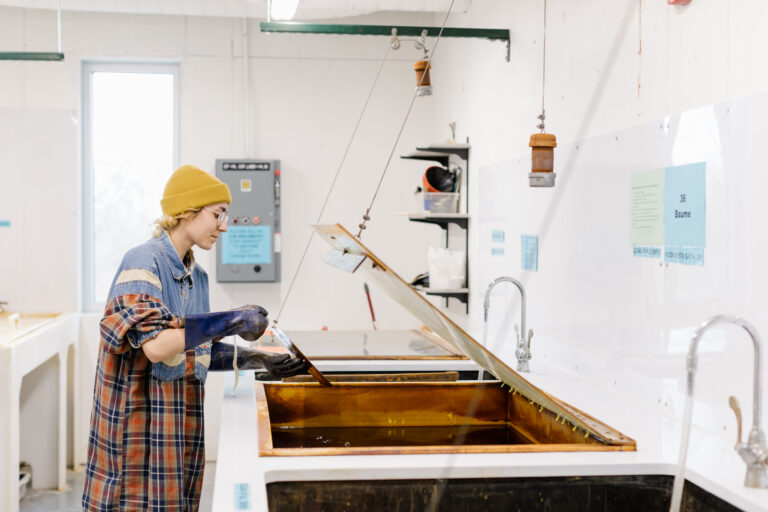
The architectural landscapes in Japan, the United Arab Emirates (UAE), and Saudi Arabia are changing dynamically. These countries are experiencing a surge in ambitious development projects, from sustainable urban centres in Japan to iconic skyscrapers in the UAE and revolutionary giga-projects in Saudi Arabia. This rapid growth has fuelled a rising demand for architects with fresh perspectives and global expertise.
These architects bring a unique blend of design sensibilities and technical knowledge to the table. They can bridge the gap between local traditions and cutting-edge trends, nurturing innovation while respecting cultural heritage. Of course, challenges abound. Navigating regulations, collaborating with local teams, and adapting to unique climates all require a broad skill set.
The best architecture schools can set you up to become one of them. If that’s something that you’re seeking, then consider these three universities that can help with your aspirations:
Indiana University
The Sidney and Lois Eskenazi School of Art, Architecture + Design at Indiana University Bloomington is a young school steeped in artistic heritage. Established in 2016, the school merges the strengths of established programmes in nine areas in studio art, interior design, fashion design, merchandising, comprehensive design, and architecture.
Though the school is relatively new, its roots run deep. IU Bloomington has one of the nation’s original university art programmes. The Eskenazi School carries this torch forward, empowering students with artistic and design expertise in a globalised world. This is further enhanced by instruction in merchandising and product development, equipping graduates for success across various creative fields.
For those drawn to architecture, the J. Irwin Miller Architecture Programme (M.Arch) offers a unique curriculum. It transforms students into “architects of the future” — individuals comfortable with technology, science, and artistic expression. The programme emphasises the practical, allowing students to seamlessly transition from concept to product. Beyond the classroom, students gain invaluable experience in Columbus, Indiana — a haven for modern architecture with over 60 historic structures. The Nomadic Studio programme provides more international collaboration and travel opportunities.
The school offers six undergraduate programmes, each incorporating a “Creative Core” — a foundational curriculum that equips students with the essential tools for artistic exploration. The result? Students emerge with the confidence and skills to become innovators, artists, designers, and retail leaders. Just ask B.F.A. Sculpture student Rose Harding, who says “Being an art student in a liberal arts school means I have more opportunities to think outside of my own discipline and take classes with students from all backgrounds.”
Click here to learn more about Eskenazi School.

UCLA’s faculty guides students to engage with the world, view ideas as productive responses, and use design and writing to express curated perspectives. Source: University of California, Los Angeles/Facebook
University of California, Los Angeles
A champion of ideas and their articulate expression — that’s the UCLA Department of Architecture and Urban Design. Here, you’ll engage with the world around you, see ideas as productive forms of response, and learn how to use design and writing as expressions of newly curated perspectives. You’ll interrogate contemporary urban issues and propose possible futures with equal measures of expertise, optimism, and vision.
The design studio is the heart of the department. This is where you’ll see the department’s academic mission fuse with the social and cultural phenomena that surround architectural education. The department’s creative community comes from a rich variety of backgrounds, and each of their unique, complex perspectives is respected and celebrated here. In this open environment, you’ll learn from, share ideas and work with them within and beyond studio hours.
As an MArch student, you’ll get to prepare for future practice here. Through a focused framing of today’s cultural, ecological, political, and technological questions, you’ll be equipped to not only lead the professional field but also to construct new opportunities for it by positioning your design skills within a rapidly changing world.
In your third year, you can choose from an array of one-year thematically-focused Research Studios, as well as two supplemental Advanced Topic Studios (to be completed in the first two quarters) and a number of elective courses. Led by senior design faculty and structured around specific contemporary concerns, the Research Studios comprises a first quarter of research, a second quarter of hypothesis definition and development, and a final quarter of design resolution. You’ll get to rethink existing problems, establish new directions, and make well-informed and progressive conjectures that shape the built environment.

SALA’s programmes, led by a distinguished faculty, prepare students to be creative leaders, effective collaborators, and agents of change. Source: University of British Columbia/Facebook
University of British Columbia
At the University of British Columbia’s School of Architecture and Landscape Architecture (SALA), an accomplished, multi-disciplinary faculty teaches students to become creative leaders, effective collaborators, and progressive change agents. They do this through a whole range of master’s degrees, such as Master of Architecture, Master of Landscape Architecture, Master of Urban Design, Master of Advanced Studies in Architecture, Master of Advanced Studies in Landscape Architecture, and Master of Engineering Leadership in High-Performance Buildings.
The highlight, however, is the dual degree option where students can pursue a Master of Architecture and a Master of Landscape Architecture simultaneously in a condensed time span. Studios are integral to the programme. You’ll be part of projects at different scales, correlating basic cultural and historical phenomena, issues, and events with architectural ideas and materials. You will also analyse and interpret physical and environmental contexts to develop basic notions of structure, program, and use, among others.
The dual degree is the first of its kind, and admission is highly competitive. It’s all worth it, given everything you stand to gain from the campus and city you’ll be based in. Both serve as living laboratories to respond to the urgent human and environmental issues of our times. UBC is located on Canada’s west coast, connecting the university to a number of communities, from Cascadia to the Pacific Rim, and with plenty of examples of how alumni have shaped Vancouver into an internationally recognised example of sustainable urban design.
*Some of the institutions featured in this article are commercial partners of Study International










